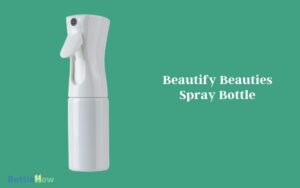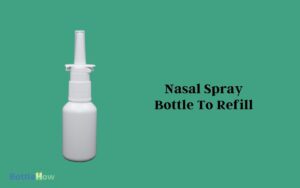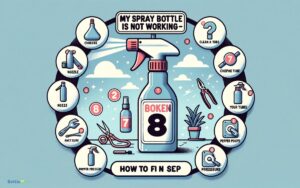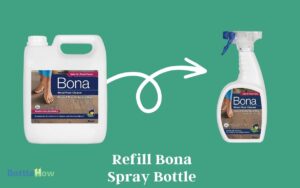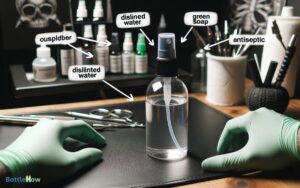Can You Put Lysol in a Spray Bottle? Discover!
You should not transfer Lysol into a spray bottle. Lysol’s original packaging is specifically designed to maintain both the chemical stability and effectiveness of the disinfectant.
Altering the container could not only weaken its sanitizing power, making it less effective, but could also pose safety hazards due to chemical instability and potential mislabeling. Additionally, legal issues might arise from not adhering to safety and labeling regulations.
Always check the manufacturer’s guidelines and safety information before considering any changes. There’s more to explore on ensuring safety and effectiveness when using products like Lysol.
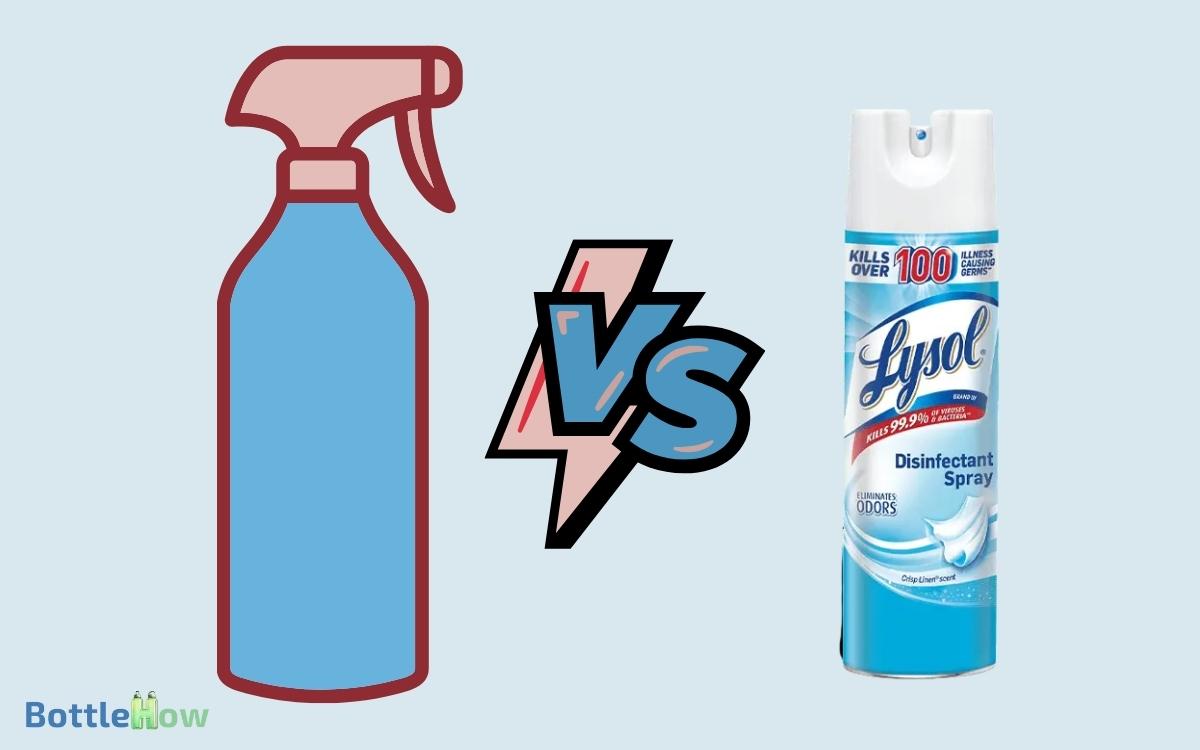
Key Takeaways
Understanding Lysol’s Composition
To effectively use Lysol, it’s important to understand its chemical makeup. Lysol contains various active ingredients that target bacteria and viruses, the most significant being ethanol and alkyl dimethyl benzyl ammonium saccharinate.
These compounds are highly effective in disinfection, but they must be handled with care due to their potent nature.
You need to know that the efficacy of Lysol comes from its specific formulation. Altering this by dilution or mixing can affect its ability to sanitize effectively.
It’s vital to follow the manufacturer’s guidelines to make sure you’re achieving maximum disinfection while maintaining safety.
Risks of Using Alternate Containers
When you contemplate transferring Lysol to a different spray bottle, you must be mindful of potential chemical stability issues. Utilizing containers not specifically designed for Lysol can result in safety protocol violations, putting you and others at risk.
It’s essential to comprehend these risks to guarantee you’re using products safely and effectively.
Chemical Stability Concerns
Transferring Lysol to an alternate container can compromise its chemical stability, potentially rendering it ineffective or hazardous.
When you choose to store Lysol in different packaging, you’re risking the alteration of its chemical ingredients. Certain plastics may interact with Lysol’s components, leading to degradation of both the container and the product.
This could result in the release of harmful chemicals or a decrease in the product’s ability to kill germs effectively.
Safety Protocol Violations
Using alternate containers for Lysol not only violates safety protocols but also increases the risk of accidents and contamination.
When you transfer Lysol into another bottle, you might be misled by the container’s appearance and accidentally mix chemicals, which could create harmful reactions. Moreover, improper labeling can lead to dangerous misunderstandings.
You’re also risking the integrity of the disinfectant, as Lysol’s original packaging is designed to maintain its effectiveness and safety. If you’re dedicated to serving and protecting others, adhere strictly to manufacturers’ guidelines.
Always use products as intended and keep them in their original containers to guarantee safety and efficacy. This approach minimizes risks and ensures that your environments remain clean and safe.
Impact on Disinfecting Power
Diluting Lysol by transferring it to a spray bottle may reduce its effectiveness as a disinfectant. When you’re aiming to guarantee environments are safe and healthy, maintaining the potency of your cleaning agents is vital.
Altering the concentration by adding water or incorrectly measuring can greatly impact the germ-killing properties of Lysol. This is particularly important in settings like healthcare or food service, where the utmost standard of hygiene is essential.
You must make sure that the mixture retains its ability to effectively eliminate pathogens. Compromising on disinfection strength could lead to insufficient sanitization, potentially allowing harmful bacteria and viruses to persist.
Always prioritize effectiveness when you’re tasked with the well-being of others.
Manufacturer’s Recommendations
Before putting Lysol in a spray bottle, you should refer to the manufacturer’s guidelines to guarantee safe and effective use. This ensures you’re using the product in a manner that’s both safe and optimally effective.
Here are a few key points to bear in mind:
- Dilution Instructions: Lysol should be diluted according to the manufacturer’s specifications to maintain its disinfectant properties without causing harm.
- Type of Spray Bottle: Ensure the spray bottle is compatible with chemical disinfectants to prevent any reactions that could degrade the bottle or alter the solution.
- Application Method: Follow the recommended application methods to ensure thorough coverage and disinfection.
Keeping these guidelines in mind helps you serve others safely and effectively.
Legal and Safety Considerations
Considering legal and safety implications is essential when transferring Lysol to a spray bottle. You must check Lysol’s label for any warnings about repackaging. Some disinfectants lose effectiveness or become hazardous when transferred to a different container. Additionally, improper labeling could lead to accidental misuse or exposure. If you’re wondering, can you spray isopropyl alcohol, it’s important to check safety guidelines to ensure proper handling and application.
Often, manufacturers specify that transferring contents can void warranties or violate regulations. This could expose you to legal risks if the product causes harm.
Additionally, safety is paramount. Lysol contains chemicals that can be hazardous if not handled correctly.
Mislabeling your homemade spray could lead to accidental misuse, endangering others who mightn’t recognize the bottle’s contents. You’re responsible for ensuring that everyone in your care or service understands what they’re using.
Always prioritize their well-being by keeping original labels and safety information intact when you use alternate containers.
Proper Transfer Techniques
To safely transfer Lysol into a spray bottle, you’ll need to use a clean funnel and make sure the container is properly sanitized. It’s important to guarantee that the process is done with care to prevent any contamination or spills, which could be harmful.
Here are your key steps:
- Pour Slowly: Gently pour the Lysol through the funnel to avoid splashes or overfilling.
- Check Seals: Before transferring, check the spray bottle for any cracks or defects that might cause leaks.
- Wear Protective Gear: Always wear gloves and possibly a mask to avoid direct contact with the disinfectant, as it can be harsh on skin and respiratory systems.
Storing Lysol in Spray Bottles
After successfully transferring Lysol into a spray bottle, it’s crucial to store it properly to maintain its effectiveness. You must keep the bottle in a cool, dry place away from direct sunlight, as heat and light can degrade the disinfectant.
Make sure the spray bottle is tightly sealed to prevent the active ingredients from evaporating. It’s also wise to label the bottle clearly, indicating contents and the date of transfer. This practice helps avoid any confusion and ensures safe usage.
Alternatives to Re-bottling
If you’re seeking alternatives to re-bottling Lysol, consider using ready-to-use products that require no transfer. These options not only streamline the process but also guarantee safety and effectiveness.
Here are a few suggestions:
- Pre-mixed Lysol Disinfectant Sprays: These are specifically formulated to be used immediately with no need for dilution or re-bottling.
- Disposable Disinfectant Wipes: Convenient for quick clean-ups, these wipes come pre-soaked in disinfectant, eliminating the risk of improper dilution.
- Trigger Spray Bottles: Some disinfectants come in original bottles equipped with trigger sprays, providing ease of use while maintaining the integrity of the chemical composition.
Choosing these options helps you maintain a high standard of hygiene and care without the risks associated with transferring chemicals.
Best Practices for Disinfection
When aiming to disinfect surfaces effectively, it’s essential that you choose the right products and methods. Make sure you’re using disinfectants that are suitably powerful for your specific needs, and always follow the manufacturer’s guidelines for application.
Missteps in either product selection or application technique can reduce the effectiveness of your disinfection efforts.
Effective Disinfectant Application Methods
For essential disinfection, you should apply Lysol using a clean spray bottle that distributes the solution evenly on surfaces.
When using Lysol, it’s vital to follow these practices to guarantee safety and effectiveness:
- Pre-clean the surface: Remove any visible dirt or grime before disinfection to enhance the effectiveness of Lysol.
- Allow sufficient contact time: Spray the surface and let the disinfectant sit for at least the minimum time recommended on the product label to kill germs effectively.
- Use proper ventilation: Always ensure the area is well-ventilated while applying Lysol to minimize inhalation of fumes, protecting your health and wellbeing.
These steps will help you achieve a higher standard of cleanliness and safety in your efforts to serve and protect others.
Choosing Right Disinfection Products
Selecting the right disinfection products is essential for ensuring effective germ elimination and maintaining safety standards.
You’ll want to take into account the types of surfaces you’re disinfecting and the specific microbes you’re targeting. Always check the product’s label for its efficacy against various pathogens and its safety for use on different materials.
It’s vital to use disinfectants that are approved by relevant health authorities, like the EPA in the U.S.
These products have been rigorously tested and proven to be effective when used according to the instructions. Also, make sure you’re wearing appropriate protective gear to safeguard yourself while using these chemicals.
Conclusion
So, you thought transferring Lysol into a trendy spray bottle would be a clever hack, didn’t you? Unfortunately, while it might look chic, doing so can actually compromise the effectiveness of the disinfectant and expose you to unnecessary risks.
Stick to the manufacturer’s bottle it’s designed that way for good reasons. Embrace the original packaging; sometimes, the best methods are the least adventurous.
Remember, when it comes to safety and efficacy, boring is always better.

